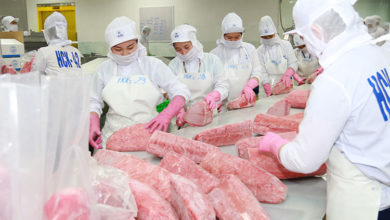Vietnam eyes USD 70 billion in agricultural exports despite U.S. tariff hurdles
Vietnam's Ministry of Agriculture and Environment is aiming high for 2025, setting a target of USD 65 billion in agro-forestry-fishery exports, up by USD 2.5 billion from last year, with an ambitious goal of reaching USD 70 billion.
Minister Do Duc Duy has approved the action plan for 2025, which outlines key objectives to drive the sector forward, including boosting value-added growth in agriculture, forestry, and fisheries by at least 4%.

A central focus of the strategy is expanding both domestic and international markets. The ministry will intensify trade promotion, actively negotiate to remove technical and trade barriers, and pursue official export channels for agricultural goods to major destinations like China, the U.S., the EU, Russia, Brazil, Japan, and South Korea.
Vietnam also plans to capitalize on untapped opportunities in emerging markets, including Halal food markets in Islamic countries, as well as in the Middle East and Africa. By diversifying both products and markets, Vietnam aims to reduce its reliance on small-scale border trade, particularly in the northern regions.
The ministry is preparing detailed export market analyses and response plans to tackle changes in tariffs, rules of origin, and technical standards in key markets such as the U.S., EU, and China.
Another priority is to build and promote the “Vietnamese Agricultural Products” brand globally, especially for core exports. Work is underway to develop a dedicated decree for agricultural branding.
On the domestic front, the ministry has crafted strategies to stimulate consumption of seasonal goods like vegetables, flowers, and fruits. Stabilizing market prices and controlling volatility for agricultural products, seafood, animal feed, and farm inputs are also on the agenda.
Additionally, policies are being designed to support farmers and businesses in times of market uncertainty, especially for sectors facing weaker growth forecasts in 2024, such as rice and certain fruit varieties.
The ministry is also considering preferential credit programs and land rental incentives for companies investing in warehousing and logistics infrastructure, to strengthen supply chain resilience.
Data from the ministry shows agro-forestry-fishery exports reached USD 15.72 billion in the first quarter of 2025, marking a 13% increase year-on-year. The U.S. remained Vietnam’s top export market, taking a 20% share, followed by China at 17%, and Japan at nearly 8%.
Ministerial officials acknowledged that the newly announced 46% retaliatory tariff by President Donald Trump will pose significant challenges, particularly for leading exports like wood, seafood, pepper, cashews, and coffee.
Still, the ministry remains steadfast in its commitment to achieving the ambitious export targets for 2025, despite the headwinds.
VFM






